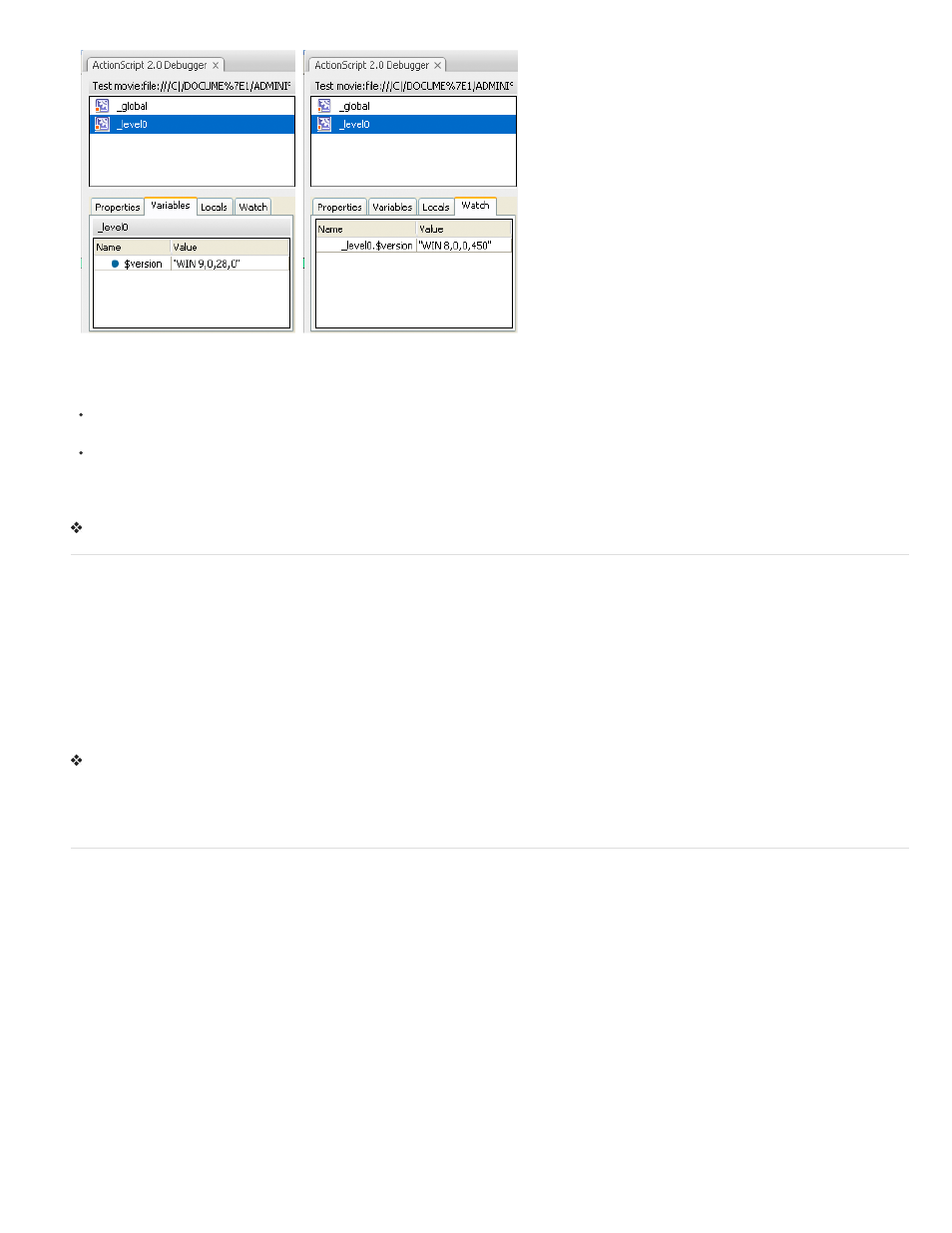Adobe Flash Professional CC 2014 v.13.0 User Manual
Page 646

Variables marked for the Watch list and variables in the Watch list
Add variables to the Watch list
On the Variables or Locals tab, right-click (Windows) or Control-click (Macintosh) a selected variable; then select Watch from the context
menu. A blue dot appears next to the variable.
On the Watch tab, right-click (Windows) or Control-click (Macintosh) and select Add from the context menu. Double-click in the name
column, and enter the target path to the variable name.
Remove variables from the Watch list
On the Watch tab or the Variables tab, right-click (Windows) or Control-click (Macintosh) and select Remove from the context menu.
Display movie clip properties and change editable properties
The Debugger’s Properties tab shows all the property values of any movie clip on the Stage. If you change a value, you can see its effect in the
SWF file while it runs. (Some movie clip properties are read-only and cannot be changed.)
Display a movie clip’s properties in the Debugger
1. Select a movie clip from the display list.
2. Click the Properties tab in the Debugger.
Modify a property value
In the Debugger’s Properties tab, double-click the value, and enter a new value.
Enter a string (any value surrounded by quotation marks), a number, or a Boolean value (true or false). You cannot enter an expression (for
example, x + 50), or object or array values (for example, {id: "rogue"} or [1, 2, 3]).
Note: To write the value of an expression to the Output panel in the test environment, use the trace() statement.
List a SWF file’s objects and variables
To list a SWF file’s objects, use the List Objects command, which is useful for finding the correct target path and instance names. To list a SWF
file’s variables, use the List Variables command, with which you can find a variable’s name and target path.
Selecting the List Objects or List Variables command clears the contents of the Output panel. If you do not want to lose this information, select
Save to File from the Output Panel menu before selecting the command.
List a SWF file’s objects
In the test environment, the List Objects command shows the level, frame, object type (shape, movie clip, or button), target paths, and instance
names of movie clips, buttons, and text fields in a hierarchical list in the Output panel. (It does not show all ActionScript data objects.)
1. If your SWF file is not running in the test environment, select Control > Test.
2. Select Debug > List Objects.
A list of all the objects currently on the Stage appears in the Output panel. The list does not update automatically as the SWF file plays; you
must select the List Objects command each time you want to send the information to the Output panel.
List a SWF file’s variables in the Output panel
639
